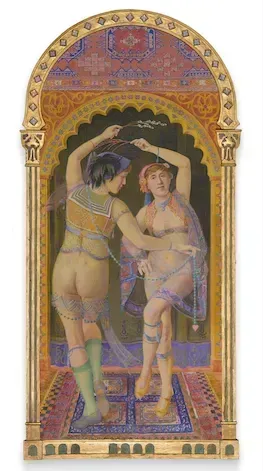
Jun 17
‘The First Homosexuals: The Birth of a New Identity, 1869-1939’ expansive companion book for new exhibit
Jim Van Buskirk READ TIME: 1 MIN.
Jonathan Katz has done it again. “The First Homosexuals: The Birth of a New Identity, 1869-1939” is a major contribution to queer art history. Co-curated with Canadian nonbinary art historian Johnny Willis, the exhibit “The First Homosexuals” is on view through July 26 at Wrightwood 659, an independent exhibition space in Chicago’s Lincoln Park neighborhood.
Disappointingly, and surprisingly, the exhibit will not travel to other U.S. venues, “though not for want of trying to find other institutions,” according to Katz. “Apparently, queer art shows remain something of a third rail in the American museum world, a situation that threatens to become even more dire under the current administration.”
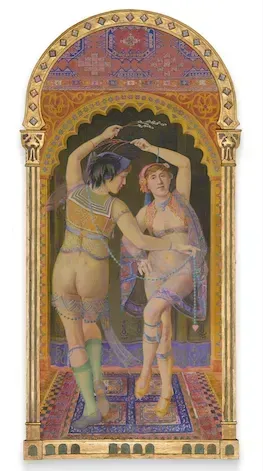
Important west coast venues including SFMOMA, the Fine Arts Museums of San Francisco, and the Getty Center reportedly all declined. The good news is that Phaidon’s Monacelli imprint has published a magnificent catalog, to be available in July. Not having seen the exhibit, this review focuses on the catalog.
Katz’s credentials are impressive. He co-curated the groundbreaking 2010 exhibition “Hide/Seek: Difference and Desire in American Portraiture” at the National Portrait Gallery in Washington, DC. The first major museum exploration of the impact of same-sex desire in the creation of modern American portraiture, despite being considered controversial, traveled to the Brooklyn Museum and the Tacoma Art Museum.
In 2019 Wrightwood 659 hosted Katz's “About Face: Stonewall, Revolt and New Queer Art.” Fortunately, both these major exhibitions leave impressive catalogs. Full disclosure: I knew Dr. Katz during his time in San Francisco where he founded the Harvey Milk Institute, chaired S.F. City College’s Lesbian and Gay Studies Department, co-founded Queer Nation SF, and was the first artistic director of the National Queer Arts Festival.
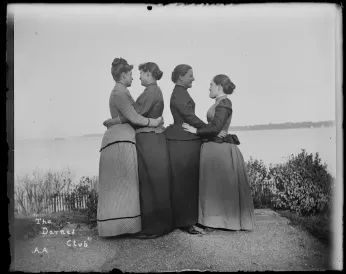
Katz’s perspective is deeper, and far more than “mere” art history: “If we take the history of art as the world’s largest and most complete archive of the history of sexuality ... then it’s high time we examined that archive at the moment of homosexuality’s emergence.”
Many images are astutely decoded in their historical and cultural context. “Representation leads to insights that were specifically difficult, if not actively illegal, to articulate in language,” says Katz.
Exemplary examples
From its lavender end papers through its 400 pages of exquisitely reproduced images, scholarly notes, and a comprehensive index, this exemplary example of art history is relatively reasonably priced at $74.95. Any description will fail to capture the breadth and depth of its contents, refreshingly international in scope, which includes images of oil and watercolor paintings, drawing, sculpture, film stills, lithographs and photography. The essays by a variety of contributors explore the impact of colonialism, class, racism, homophobia, and misogyny on queer representation.
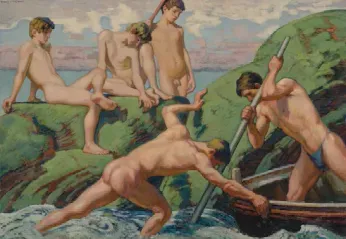
The beginning of the examination coincides with the coinage of the terms “heterosexual” and “homosexual” by Karl Maria Kertbeny in 1869 and end with the beginning of the second world war. The language is carefully and sensitively expressed, especially in the framing essays “Before the Binary” and “Beyond the Binary.”
Among the many “usual suspects” in The First Homosexuals are F. Holland Day, Claude Cahun, Pavel Tchelitchew, John Singer Sargent, Marsden Hartley, Marie Laurencin, Alice Austen, Duncan Grant, Florine Stettheimer, and Romaine Brooks.
It was particularly pleasing to note the inclusion of Gustave Caillebotte’s 1884 “Man at His Bath,” which Katz and André Dombrowski explore in depth in their sensitive and pioneering essay “Caillebotte, Painting Naked Men” That essay is also included in the catalog for “Gustave Caillebotte: Painting Men” originating at the Musée d’Orsay in Paris, before traveling to the Getty Center and the Art Institute of Chicago.
In addition to the 21 wide-ranging scholarly essays, the succinct captions convey multitudes: For example, “In 1910, about 40 years after the word homosexual was coined, the German physician and queer activist Magnus Hirschfeld coined the term ‘transvestite,’ followed by ‘transsexual’ in 1923.”
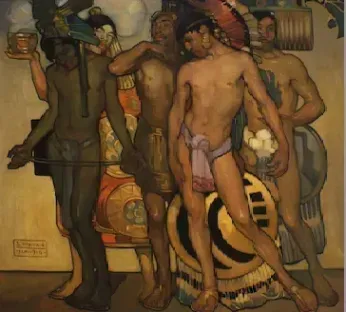
A two-page spread features various representations of Lili Elbe, one of the first transgender women to undergo gender-affirming surgery in 1930 under the care of Hirschfeld. Another two-page spread offers photographic documentation of Nazi destruction of Hirschfeld's Institute for Sexual Science.
Also included are highlights from “The First Homosexuals, 2022,” the first iteration of this project exhibited in late 2022 and early 2023. These 30 thumbnail images, “kept smaller in scale by museum limits and moratoriums on borrowing following the COVID-19 pandemic,” are nevertheless impressive.
Even more exciting is the inclusion of the work of so many less familiar artists, including Gabriel Morcillo’s exemplification of “Orientalism,” Violet Oakley’s formal paintings, Bertel Thorvaldsen’s neoclassical imagery, provocative self-portraits by Elisàr von Kupffer (known as Elisarion), Lionel Wendt’s male nudes, [Bolette] Berg & [Marie] Høeg’s glass plate negatives, and Colombian photographer and portraitist Benjamín de la Calle.
László Mednyánszky captures “expression of homosexuality through a dark decadence, while his contemporary Károly Ferenczy worked more impressionistically.”
Kudos to Katz and Willis. May this pioneering work pave the way for even more representation and investigation of queer imagery.
‘The First Homosexuals: The Birth of a New Identity 1869-1939,’ by Jonathan D. Katz, $74.95, Phaidon Press, released July 16.
https://www.phaidon.com/monacelli/
